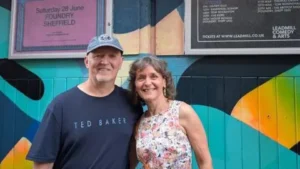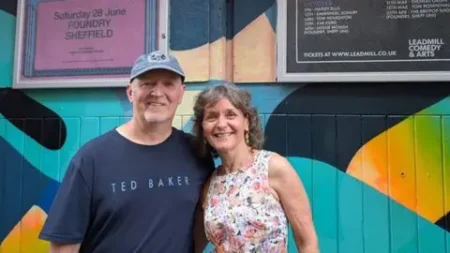The story of a lay preacher’s obsessive pursuit of a gay church volunteer, Jay Hulme, unfolds as a cautionary tale that encapsulates themes of harassment, institutional negligence, and the failures of authority figures to protect vulnerable individuals. Amidst a backdrop of spiritual community, this tale reveals the darker side of human interaction when boundaries are crossed and compounded by societal inaction.
The events began in the summer of 2021 at St. Nicholas Church in Leicester, where Jay, a volunteer, welcomed attendees. Venessa Pinto, a lay preacher working for the Church of England, emerged from the crowd and struck up a seemingly innocent conversation. Initially perceived by Jay as a shy newcomer adjusting to life after pandemic lockdowns, Venessa’s behavior quickly escalated beyond harmless interactions. A few weeks later, during a service at Leicester Cathedral, she asked Jay out for a date, a shocking request given their minimal acquaintance. Jay politely declined, stating his sexuality and lack of romantic interest, an exchange that unexpectedly initiated a downward spiral into harassment.
What initially seemed to be an awkward encounter evolved into a relentless campaign of stalking. In the wake of his rejection, Jay received a barrage of angry messages from Venessa, accusing him of gossip and asserting that he was impervious to her identity as a Black woman. This accusation not only added a layer of racial tension to the interaction but also revealed Venessa’s inability to accept boundaries. When Jay attempted to mitigate the situation by meeting Venessa, intending only to clarify misunderstandings, he found himself subjected to aggressive outbursts. She labeled him as a liar and demanded an apology for perceived slights, the nature of which she failed to specify.
As the harassment intensified, Jay’s life turned chaotic. He received anonymous messages through social media filled with vile accusations and intimidation tactics. Realizing the identity behind the cruel messages was Venessa, Jay reached out to the Leicestershire Police for help, seeking to end the cycle of abuse rather than pursue criminal charges. Unfortunately, the police response was disappointingly dismissive, opting to advise him to remain offline rather than taking actionable steps to address his situation. This lack of urgency from law enforcement compounded Jay’s distress as he continued to receive relentless online attacks, reflecting neither the level of seriousness nor an adequate understanding of stalking dynamics.
With escalating harassment, including public threats and the increasingly bizarre circumstances surrounding Venessa’s actions, Jay felt trapped. He meticulously gathered evidence, including a spreadsheet documenting Venessa’s abusive online behavior. Ultimately, disillusioned with police responses, he turned to the Church of England, which had promised an investigation into his complaints. Jay hoped for resolution; however, instead of receiving compassion and justice, he faced incredulous disbelief from high-ranking church officials. Bishop Martyn Snow, a prominent figure in the Church, accused Jay of witchcraft for praying with a candle in the darkness and suggested that he lacked credibility in his report against Venessa.
As Jay underwent this trauma, the ecclesiastical hierarchy proved incapable of providing him with tangible support. He eventually learned that despite having provided ample evidence of Venessa’s wrongdoing, the church’s handling of the situation reflected systemic failings rather than a commitment to safeguarding its community members.
Despite the depths of Jay’s suffering and public allegations against him, Venessa continued to gain visibility within the Church of England, even as her harassment campaign persisted. After a prolonged period of stalking, arrests were eventually made, but much of it came too late to heal the profound emotional and psychological scars Jay endured. Through it all, he voiced feelings of betrayal, believing that the very institutions meant to protect him had failed him gravely—a notion echoed in his summary reflection that many individuals and systems had let him down, allowing his suffering to persist unchecked.
Even after Venessa’s arrest and conviction, the insights revealed profound questions on accountability, mental health struggles, and the broader issues surrounding harassment in communities supposedly centered on compassion and support. Jay’s experience is a potent reminder of the necessity not only for better training and awareness within institutions handling such narratives but also the urgency for proactive, empathetic, and engaged responses to allegations of stalking and harassment. Today, after a tumultuous journey marred by trauma yet tempered with resilience, Jay continues to advocate for himself and those who face similar challenges within the fragile structures of faith communities worldwide.











